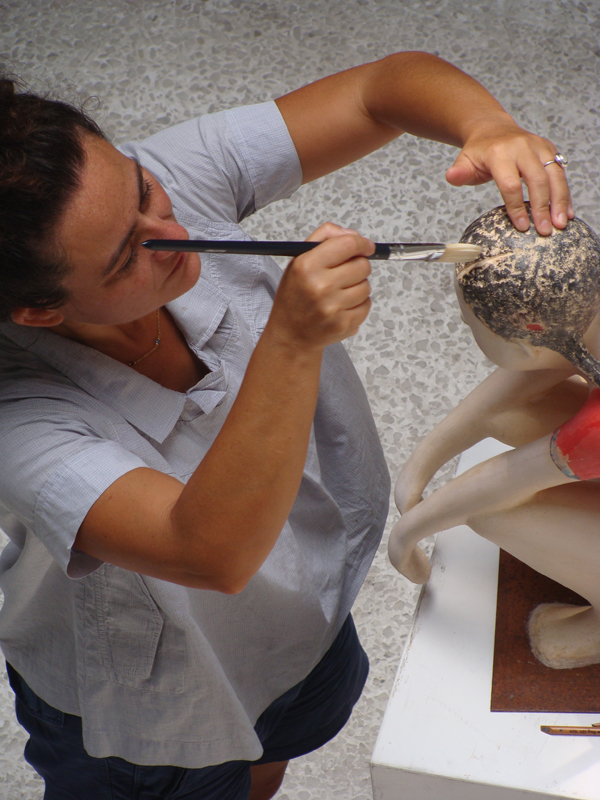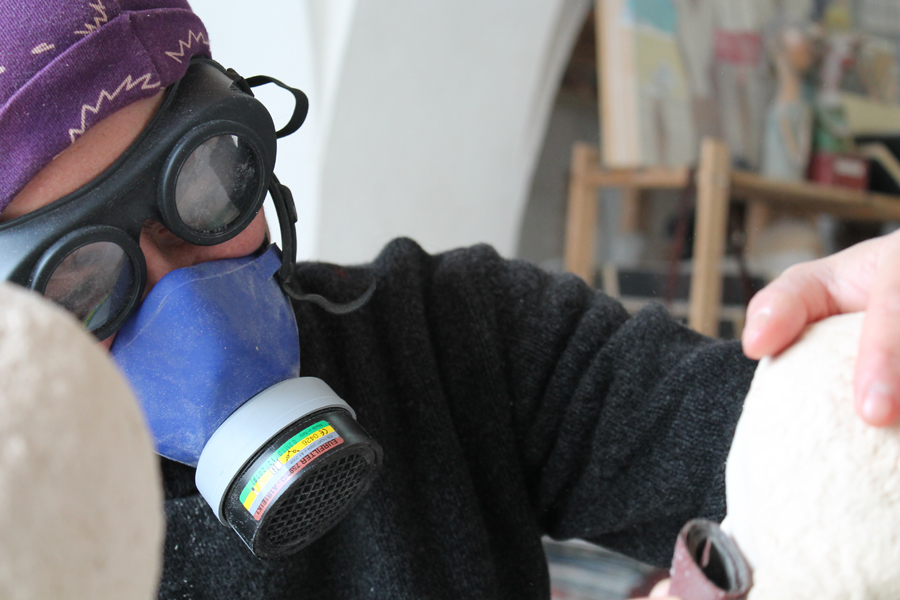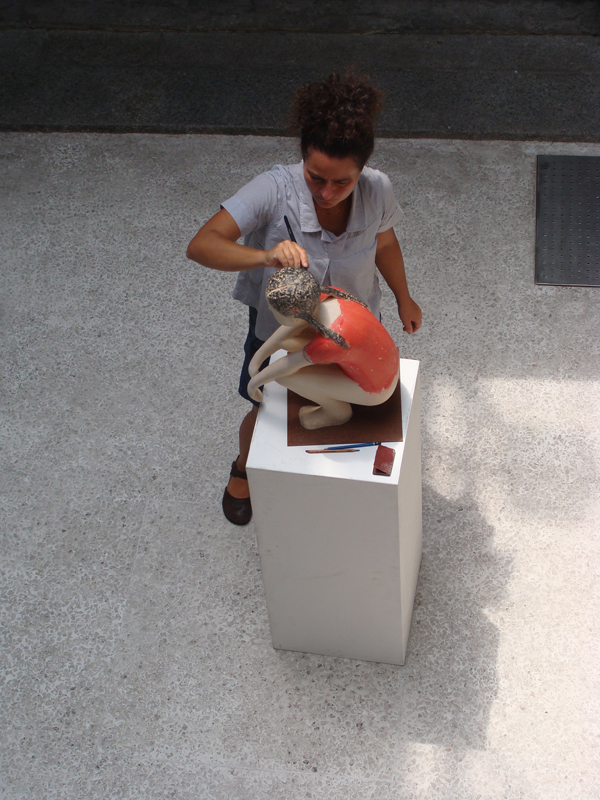Journeying from Stories, Stepping into Stories Once Again
I am not a super hero.
On each individual’s life journey, they may be obscured or unveiled by various ineffable choices. Once witnessing the artist pieces created for the world, the purity deep within one’s heart is drenched, akin to a sudden rain embraced by nature, returning to an untarnished realm. Fable-like works touch the inherent and innate innocence within individuals.
The reason for upholding kindness is quite simply a matter of choice.
This kindness, a magical power, is what I unearthed on my life journey after meeting Sabina in Paris fourteen years ago.
In our studio in central-northern Italy, we discussed her favorite piece and how it had assumed a fresh style. Those were fortunate days, as Tuscany revealed its enchanting beauty.
With my oriental perspective, I explained to Feroci, who hails from the Western world, the concept that appearance reflects the heart. Every reflection of life, stroke by stroke, etched onto our countenances through consciousness, is depicted faultlessly and without tolerance.
This appearance is a sacred gift bestowed by the heavens, mirroring the fragments and nuances of life.
Over the span of more than a decade observing the evolution of this artist’s style, Sabina Feroci has been attempting to immerse herself in art creation with simplicity and fluidity. She employs multiple layers of color description, symbolism, and mastery of form. Her aspiration is to be immersed in art, similar to her affection for wandering in the embrace of the Carrara Sea and the comforting warmth of nature.
The six series unveiled in her 2023 solo exhibition are: “Bassorilievi”, “Paper Jewelry”, “Busti”, “Portraits”, and “Ceramic Series”. They correspond respectively to animation, comics, collage, childhood, classical forms, and fable. These encompass the various forms that Feroci has drawn from her life experiences.
From written narratives to animated portrayals, contemporary media profoundly shapes people’s perceptions of the world and influences Feroci’s contemplation of the swift transformations in modern life. She approaches this with a query embedded in her artworks: What choices will your contemplation and decision-making yield?
From the familiar fables we knew from childhood, we learn how to face the world, acquiring stepping stones for our footing, like a toddler bravely embracing the perpetual unknown. Morality, honesty, conscience, good and evil, danger, courage, perseverance, and patience – all abstract concepts derived from stories – guide us towards our genuine life stories.
Sabina Feroci is a calm observer, sketching out images belonging to humanity. Amid diverse endeavors, she replicates image after image, juxtaposing inner self and physique—both real and surreal. What’s real is the artistic perspective, unexpectedly touches hearts, sometimes referred to as “emotion”. What’s surreal is the chronicle known as “memory”, existing in enigmatic obscurity. Only through the accumulation and settling of time’s flow, will these artistic creations ultimately resonate every heart and soul.
Written by Shiao Chia Chia in her art studio
Sabina Feroci animae mundi
The art by Sabina Feroci is that of sculpting emotions.
Her works are shaped by the hand of the artist and the savvy use of few materials: bale wire, paper, color. She creates ageless, universal human figures: unique creatures of their own, sometimes alone, some others in company. They communicate through a specific language: that of the body and of the soul.
The former is sometimes fixed, statue-like, unmovable; the latter is free, loose, so that the artist creates cinetic movements stretching the subject to the limit of its physical potential. In all of this there is a research for a language of the external body, mirroring that of the inner body.
Some of the sculptures by Feroci express levity, irony, they stare brazenly straight into our eyes, sticking their fingers in the nose, showing their chagrin; others express melancholy, sadness, waiting, silence, metaphysics, solitude, serenity. There is in the artist the wonderful and unique ability of representing the noblest and most uncommon feelings. The observer is not used to such harmony of form and thought combined; during the Greek eras, sculptures were meant to represent beauty through the harmony and proprotions of their shapes; then we have reached expressivity and physical dynamism, finally managing to describe the inner unrest and pain through the deformation of the body.
The sculptures by Sabina Feroci are free from spikes and sharp corners, they are not aggressive, anguished, they are aware of their own other reality, sublime, going beyond the pains and sufferings of existance: although aware of their reality, those pains are overcome both by the sweetness of the body features and shapes, smooth and sinous and by such feelings as love, tenderness, cherish, understanding, tied in, at times, to frivolous, peevish attitudes, such as being fickle, a little rude, disrespectful.
This shows us that Sabina Feroci’s creatures are essentially free, emancipated, untied by social rules, but at the same time are also strong and delicate, self-assured and determined, each with its own history, its own personality.
After the act of sculpting, ther is that of painting. The paper sculptures are colored in light, clear, delicate hues, carrying the weight of emotions, of feelings, making the work evanescent, immanent, suspended in a dreamy aura, where immateriality surpasses objectivity.


